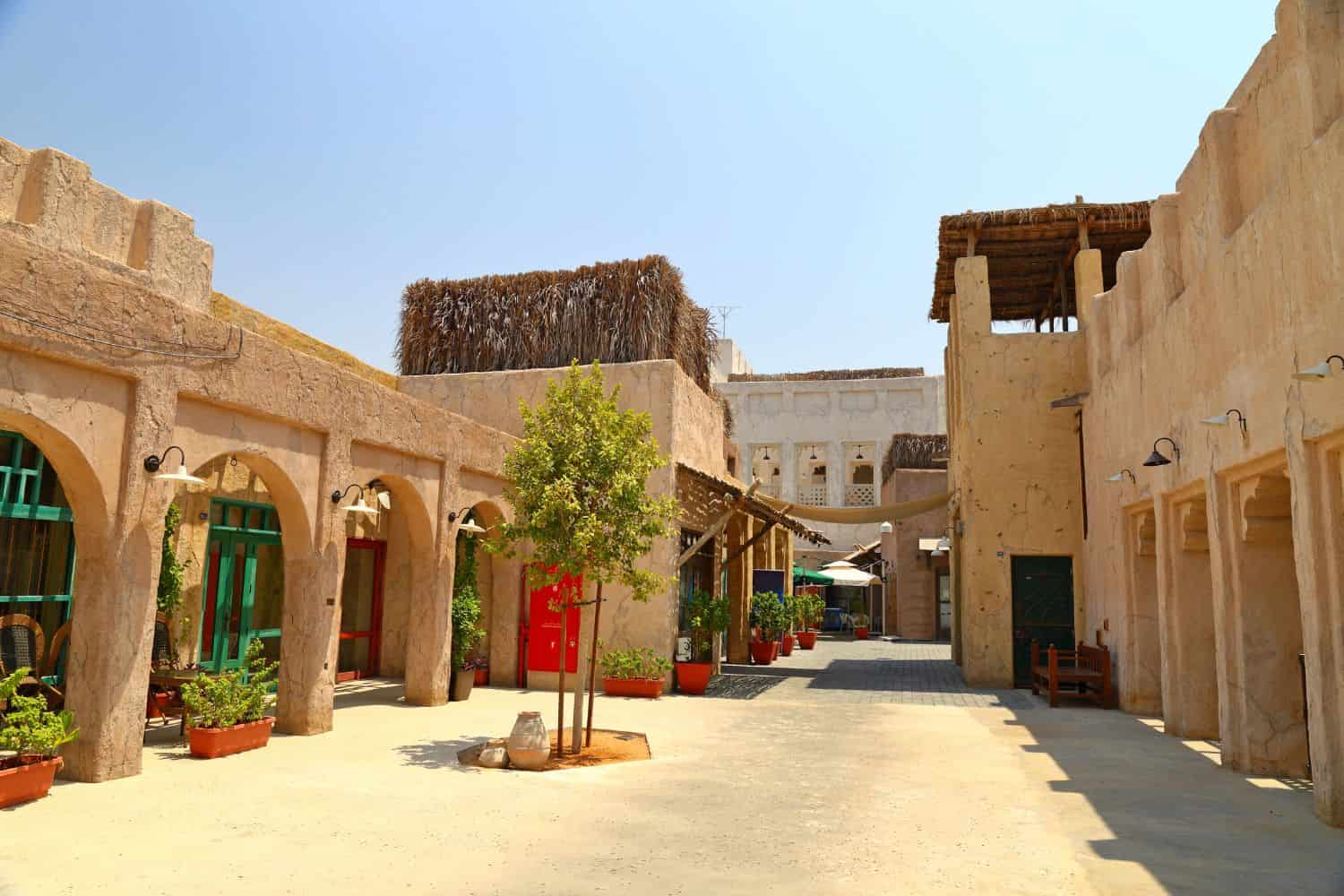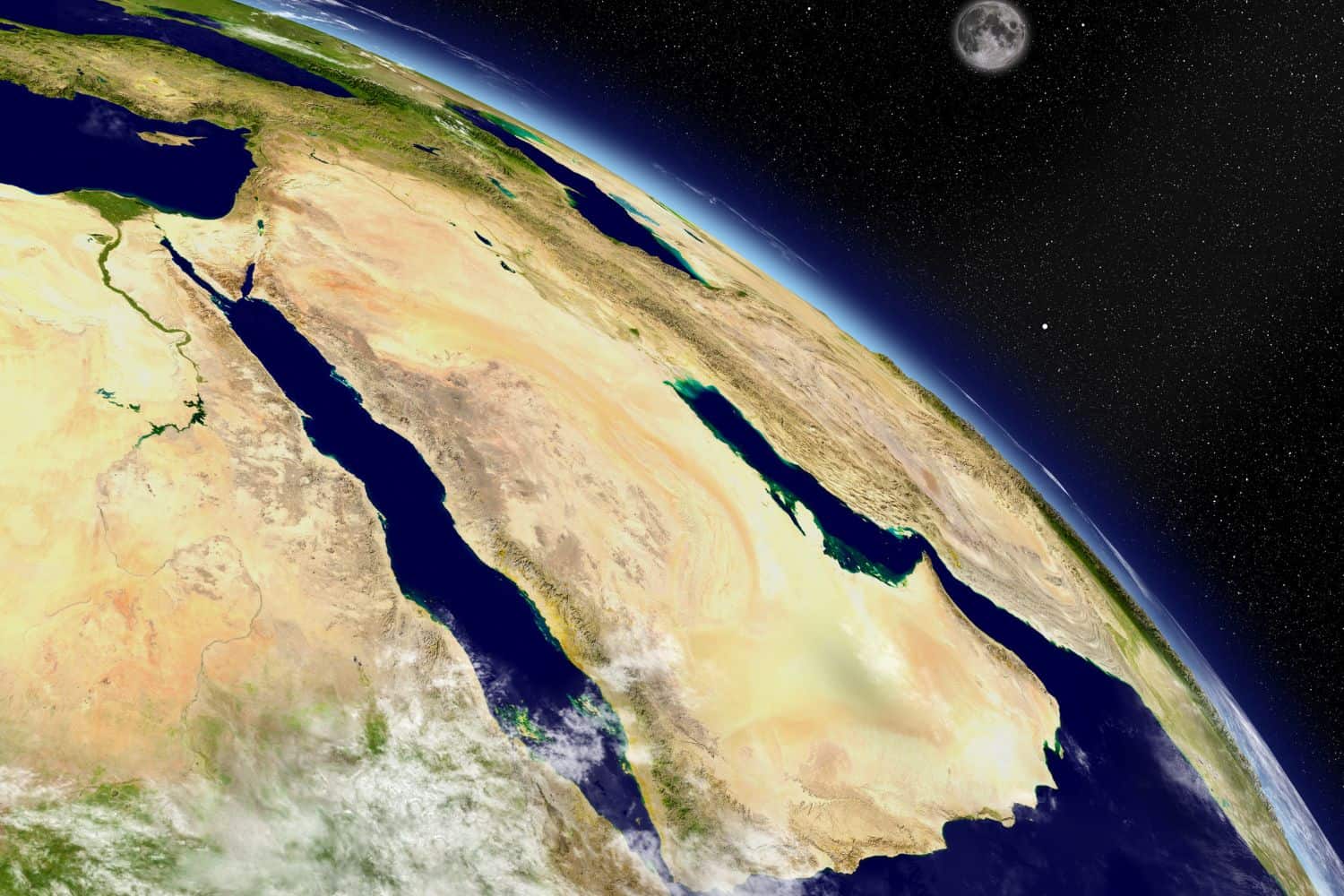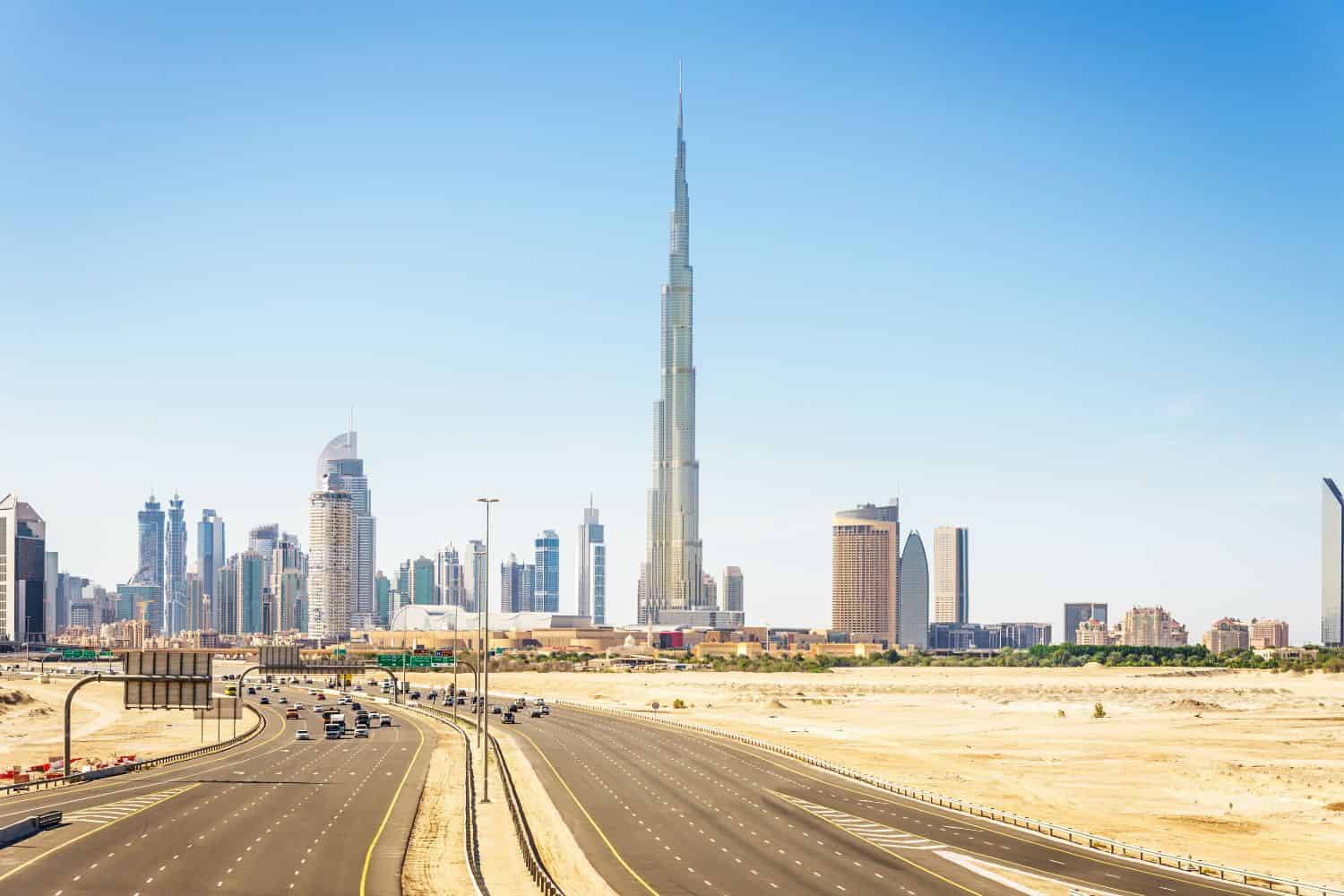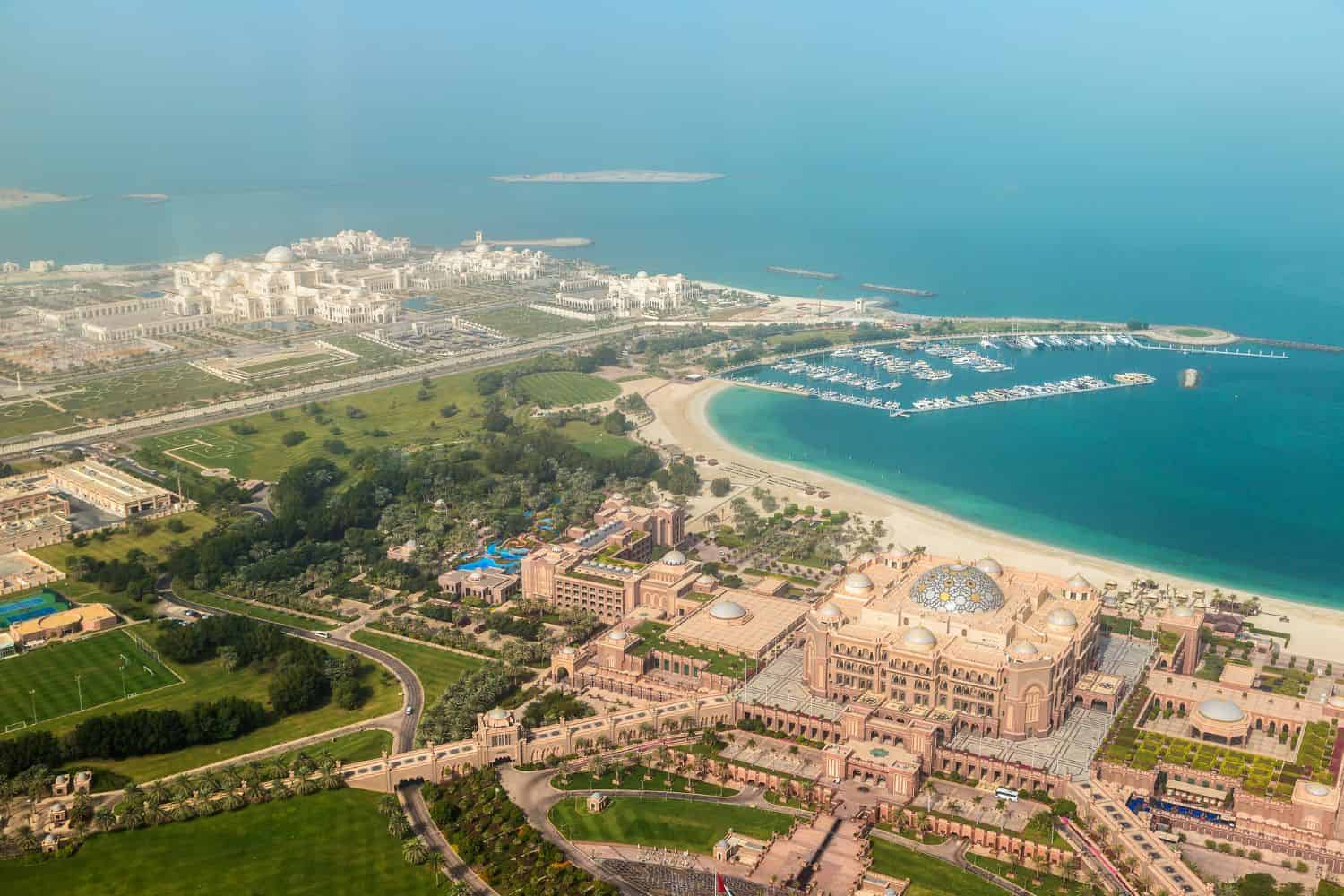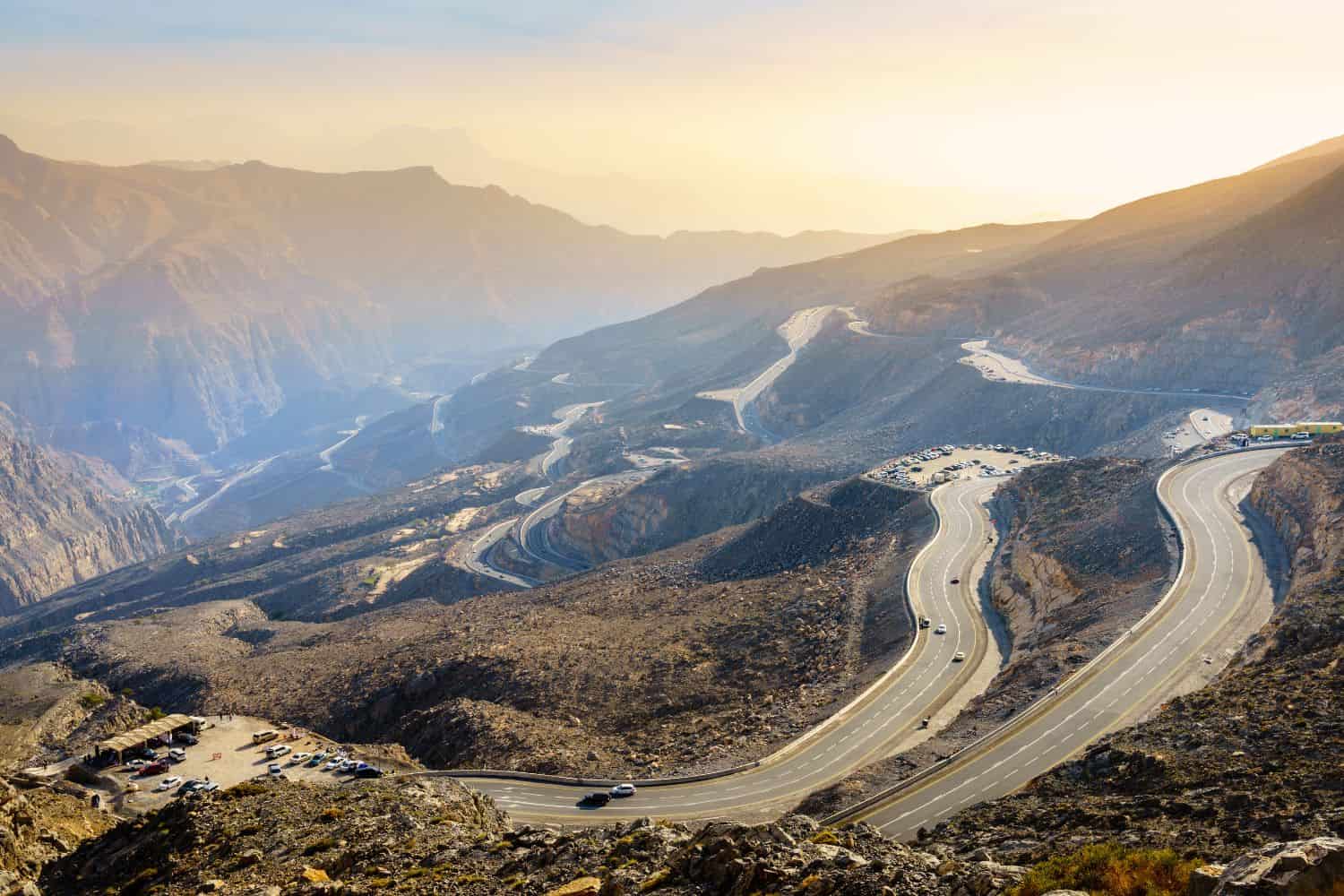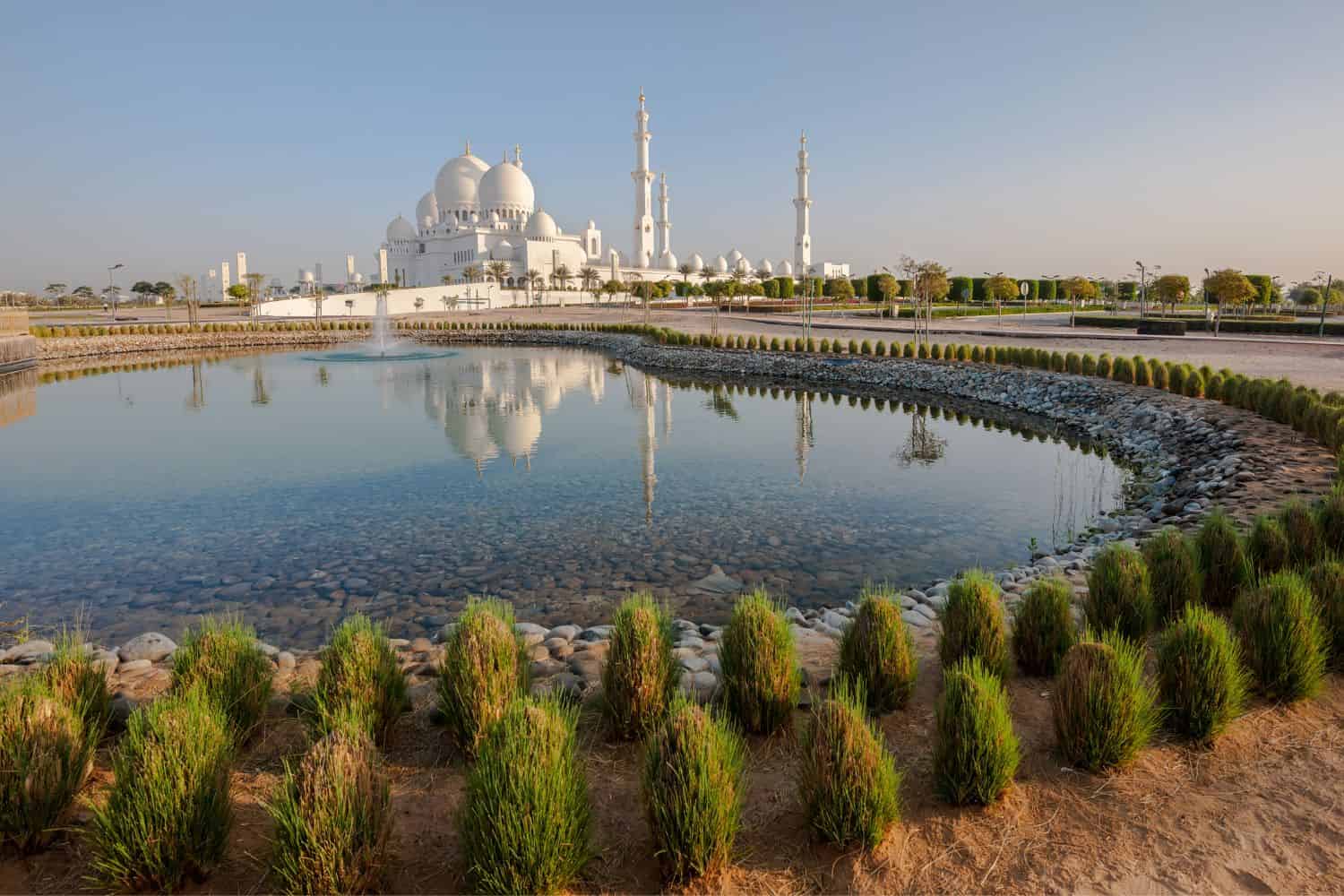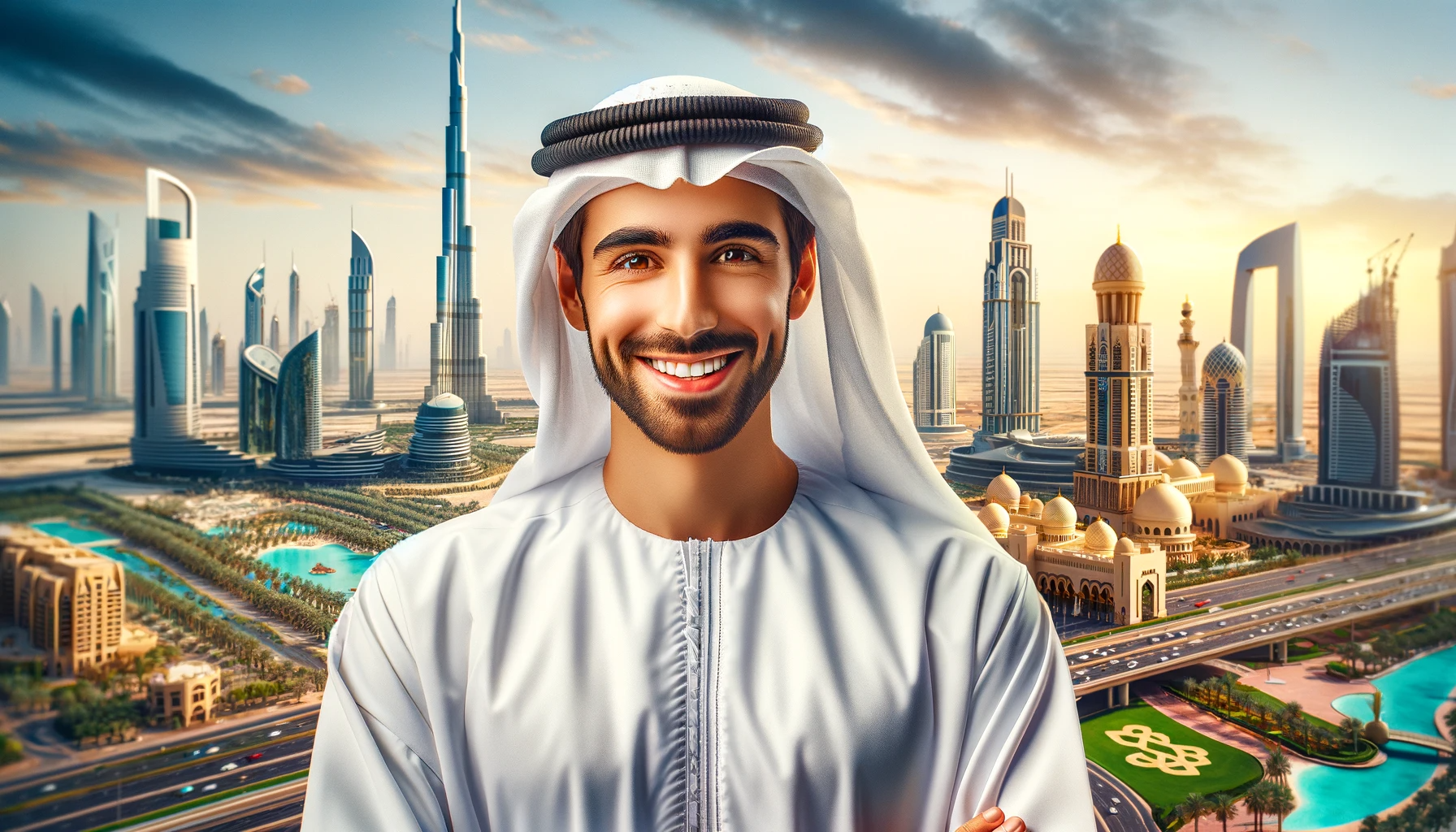Table of Contents
The geography of United Arab Emirates (UAE) is an enchanting fusion of varied landscapes and historical significance. Located in the Middle East, this nation’s geographic position has been instrumental in shaping its history and cultural identity.
Resting on the southeastern tip of the Arabian Peninsula, the United Arab Emirates geography invites curious travelers with its sprawling deserts, towering skyscrapers, and pristine coastlines. From journeying through the iconic dunes of the Rub’ al Khali to immersing oneself in the cosmopolitan allure of Dubai, the UAE’s diverse landscapes and rich history promise a memorable expedition for visitors looking for a distinctive and enlightening experience.
United Arab Emirates physical geography showcases a spectrum of remarkable natural wonders. From the magnificent oases dotting the desert, reflecting the nation’s deep-rooted oasis culture, to the diverse marine life that thrives along its shores, the UAE stands as a testament to nature’s magnificence.
Top Geographic Features of United Arab Emirates (UAE)
- Hajar Mountains: Spanning the eastern part of the UAE, these rugged mountains influence the country’s climate and topography, and are home to some of the nation’s highest peaks.
- Liwa Oasis: Located in Abu Dhabi’s western region, this is one of the largest oases in Arabia. It provides crucial water resources and is significant for agriculture in the region.
- Rub’ al Khali Desert: Also known as the Empty Quarter, this vast desert spreads into parts of the UAE, and is renowned for its sand dunes and challenging terrain.
- Persian Gulf Coastline: The northern and western coasts of the UAE are fringed by the Persian Gulf, offering rich marine biodiversity and playing a significant role in trade and tourism.
- Mangroves of Abu Dhabi: These unique ecosystems are essential for coastal protection and serve as breeding grounds for marine life.
- Wadis: The dried riverbeds or valleys, scattered across the UAE, fill with water during rains, providing essential water sources and unique habitats.
- Al Dhafra Sand Dunes: Located in the western region of Abu Dhabi, these majestic dunes are among the tallest in the world and are a testament to the UAE’s desert landscape.
- Dubai Creek: Historically, this natural seawater inlet played a vital role in the establishment and growth of Dubai, serving as a port for dhows and aiding in trade.
- Fujairah’s Indian Ocean Coastline: Unlike the rest of the UAE that borders the Persian Gulf, the Emirate of Fujairah faces the Indian Ocean, offering unique marine environments and dive sites.
- Sabkha (Salt Flats): These coastal salt flats are unique ecosystems found in the UAE, supporting specialized flora and fauna.
United Arab Emirates geographic features play a crucial role in shaping the UAE’s landscape, climate, and cultural history, making them essential elements in defining the country’s geography.
United Arab Emirates Geography
Exploring the United Arab Emirates National Geographic canvas unveils an impressive range of geographical features. From the towering Hajar mountains to the sweeping Arabian Desert and the enchanting oases of Al Ain, the nation offers a mesmerizing mosaic of natural wonders.
- Mountain Ranges – The Emblem of Grandeur: Just as documentaries spotlight majestic mountain landscapes, the UAE is proud of the Hajar range. These imposing peaks not only enhance the nation’s scenic allure but also harbor a unique biodiversity and have influenced its cultural essence.
- Lakes and Water Bodies – An Oasis of Serenity: UAE’s Hatta area, with its tranquil dams, mirrors the scenic vistas often captured in photographs. These serene water bodies, bordered by mountains and desert, illustrate the region’s geological richness.
- Deserts – Golden Sands of Time: Similar to the vast landscapes featured in documentaries, the UAE’s Arabian Desert unfolds a sea of golden sands that host a diverse range of wildlife. This arid expanse narrates tales of Bedouin traditions and the nation’s camel-rearing legacy.
- Historical Sites – Echoes from Yesteryears: UAE’s historical sites, like Al Fahidi Fort, recall journeys that bring ancient civilizations to life. These landmarks stand as a testament to the nation’s rich Bedouin and maritime heritage.
- Ethnic Diversity – A Cultural Tapestry: Mirroring the National Geographic spotlight on diverse cultures, the UAE is a fusion of ethnicities, including Emiratis, South Asians, and various expatriate communities. Each community brings its unique traditions, languages, and practices, creating a dynamic cultural blend.
- Wildlife – Nature’s Haven: The UAE’s protected zones, such as the Sir Bani Yas Island, reflect a commitment to wildlife preservation. These areas act as vital refuges for varied species, safeguarding biodiversity in a distinct environment.
- Geological Wonders – Nature’s Masterpiece: The nation’s natural treasures, like the caves of Hatta, highlight the UAE’s intrinsic beauty amidst its vast deserts. These phenomena underscore the remarkable forces of nature in action.
- Remote Exploration – Desert Adventures: The vast dunes and untouched terrains of the Rub’ al Khali invite explorers, reminiscent of journeys into unknown realms. This extensive territory offers a window into pristine landscapes and distinct ecosystems.
The UAE’s geographic features are accentuated by the presence of the Hajar mountain range. These formidable peaks, which sprawl across parts of the nation, set a dramatic scene for the country’s varied landscape. Historical routes, once trodden by Bedouin caravans, meander through these towering mountains, linking different parts of the Arabian Peninsula.
Meandering through the UAE’s landscape are the vital water channels or ‘wadis’, essential for sustenance and agriculture. Moreover, the vast stretches of the Arabian Desert and the coastal mangroves contribute uniquely to the nation’s diverse geography.
United Arab Emirates Geographic Location
The United Arab Emirates geographic location is notably strategic, and its position has been influential throughout history. Situated in the southeast part of the Arabian Peninsula, this federation of seven emirates has been a hub for trade, culture, and ideas, underscoring its historical prominence.
Borders of United Arab Emirates
The United Arab Emirates shares borders with two countries. Here is the UAE’s physical geography with the neighboring countries and the approximate total length of each border:
- Saudi Arabia: The border between the United Arab Emirates and Saudi Arabia is approximately 457 kilometers long, making it the longest international border for the UAE.
- Oman: The border between the United Arab Emirates and Oman is approximately 410 kilometers long.
| United Arab Emirates Neighboring Country | Border Length (Approximate) |
|---|---|
| Saudi Arabia | 457 kilometers |
| Oman | 410 kilometers |
These international borders delineate the UAE’s links to different regions and amplify the nation’s geopolitical significance as a nexus in the Middle East and the Arabian Gulf.
Geography of Abu Dhabi United Arab Emirates
As the capital city of the United Arab Emirates, Abu Dhabi is a captivating microcosm of the country’s human geography. Here, various ethnic groups, including Emiratis, South Asians, Filipinos, and Western expatriates, coexist, contributing to the city’s vibrant cultural tapestry.
Abu Dhabi, the capital city of the United Arab Emirates
- City of Contrasts: Abu Dhabi is known for its stark contrasts, where ultramodern skyscrapers coexist with traditional Arabian quarters, creating a unique blend of old and new.
- Persian Gulf: The Persian Gulf borders the city, playing a significant role in its trade and transportation.
- Abu Dhabi’s Elevation: The city is primarily at sea level, surrounded by desert landscapes.
- Green Spaces: Abu Dhabi is home to several beautiful parks and gardens, including the Corniche Park, offering a serene escape amidst the bustling city.
- Abu Dhabi’s Historical Significance: With a history deeply rooted in its Bedouin traditions and maritime trades, Abu Dhabi has witnessed various epochs and played a pivotal role in Middle Eastern politics and trade.
- Diverse Architecture: The city showcases a diverse architectural heritage, reflecting influences from Islamic, contemporary, and futuristic styles.
- Cultural Traditions: Abu Dhabi is a hub for Emirati traditions, and its rich culture can be seen and heard throughout the city.
- Sheikh Zayed Mosque: The magnificent Sheikh Zayed Mosque, located in the heart of the city, is an iconic symbol of the UAE’s religious and architectural splendor.
- Abu Dhabi’s Economy: The city serves as the UAE’s political and economic hub, attracting people from all over the world seeking opportunities and a high standard of living.
- Population Growth: Abu Dhabi has experienced steady population growth, with a significant influx of expatriates from various countries, leading to urbanization and infrastructure challenges.
Historical Geographical Importance of the United Arab Emirates
Throughout the ages, the United Arab Emirates geographical significance has made it a sought-after stage for historical drama. As empires and nations rose and fell, from the ancient empires of Mesopotamia to the British and the native Bedouin tribes, the UAE’s geographic position played a pivotal role in shaping the world’s history.
- Strategic Gateway: The UAE’s location as a crossroads between the East and the West, bridging Asia with Africa and Europe, has made it a strategic point for trade, cultural exchange, and military endeavors throughout history.
- Ancient Trade Routes: The historic trade routes passed through the UAE, particularly along its coast, connecting various civilizations and facilitating the exchange of goods, ideas, and cultures.
- Pearl Diving: The UAE was historically renowned for its pearl diving industry, making it a hub for trade and interaction in the Gulf region.
- British Influence: The UAE’s strategic position led to its interaction and treaties with the British Empire in the 19th and early 20th centuries, which played a significant role in its modern history.
- Tribal Alliances: The region, home to numerous Bedouin tribes, saw alliances and interactions that shaped the political and social fabric of the UAE.
- Oil Discovery: The discovery of oil in the 20th century transformed the UAE from a quiet trading and pearl-diving hub to an influential player in the global economic arena.
- Architectural Wonders: Modern UAE has become a symbol of architectural innovation, with cities like Dubai showcasing the world’s tallest buildings and marvels of engineering.
- Cultural Blending: Due to its location, the UAE has been a melting pot of cultures, which is reflected in its cuisine, music, and lifestyle.
The geographical position of United Arab Emirates (UAE), located at the southeast end of the Arabian Peninsula, is a unique blend of modern urbanization and traditional desert landscapes. Known for its massive oil reserves and rapid economic development, the UAE has transformed into a global hub for business, tourism, and culture. Its major cities, like Dubai and Abu Dhabi, are renowned for their futuristic skyscrapers, luxury shopping, and vibrant cultural scene.
In conclusion, the UAE’s geographical location has played a pivotal role in its meteoric rise and strategic importance. Bordering the Persian Gulf and the Gulf of Oman, it has been a crucial link between the Middle East, Asia, Africa, and Europe. This strategic positioning, combined with its vast oil and gas wealth, has enabled the UAE to become a key player in global economics and geopolitics. Today, the UAE continues to leverage its geographic advantages, contributing significantly to the dynamics of the Middle East and beyond.



